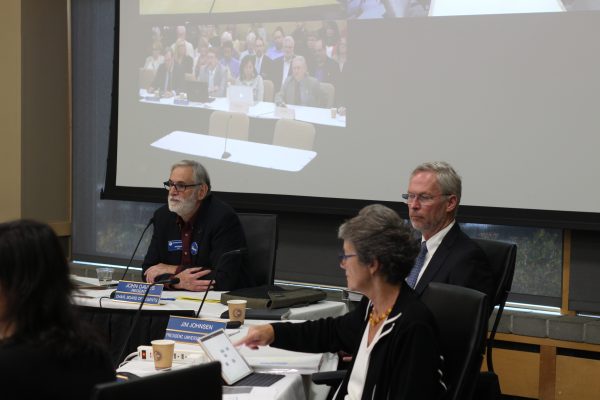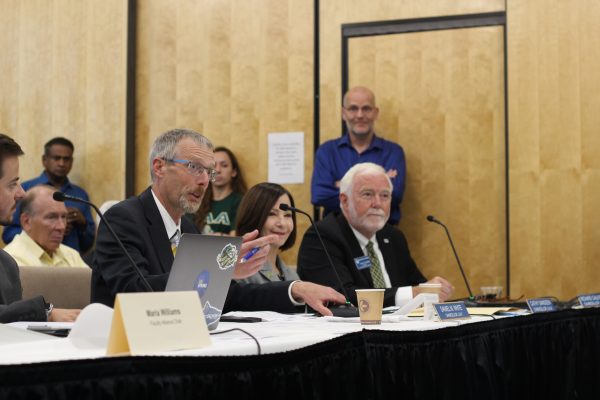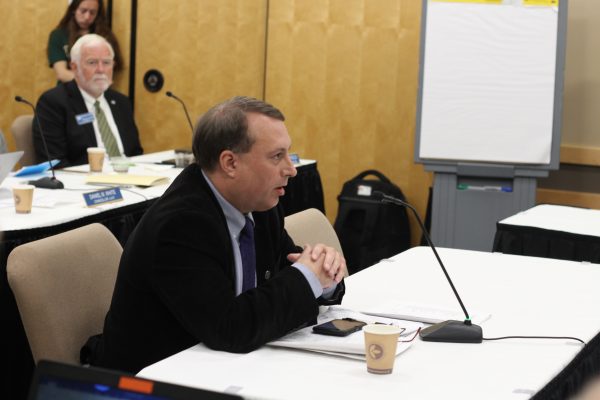
The University of Alaska Board of Regents voted 8 to 3 to move towards consolidating the entire university system to a single accredited university. The board discussed several proposals for the university system well into the afternoon in Anchorage Tuesday.
Governor Mike Dunleavy’s budget cuts to the University of Alaska total about $136 million, or roughly 41 percent of state support.
The plan regents adopted is to reorganize the University of Alaska from three separate, individually accredited universities to a single accredited university. UA President Jim Johnsen endorsed the proposal. Johnsen says the new model would streamline curricula and student services as well as create a single college for each major field of study throughout the university system. Johnsen says the plan saves money by eliminating a lot of administrative costs.
“I think the essential functions, especially those that are academic and student-facing… yes they need to stay out there in close proximity to students,” Johnsen said. “But backroom functions, we don’t need three or four different approaches, processes, systems to do lots of things that really don’t add to the student experience.”

The second proposal would have established a more cooperative consortium model for the university system while retaining the three universities.
The three universities would make reductions to staff and faculty, administrative services, athletics, travel and other budgetary items in order to meet those individual cuts.
The proposal was put together and endorsed by the three chancellors of the universities. Their argument was while each university would take large cuts, they would continue to maintain their ties to each individual community. UAS Chancellor Rick Caulfield says there would be a renewed focus on collaboration between the three campuses.
“The integrated consortium model would build on retaining three separately accredited universities and a commitment from the chancellors and all of those involved with the leadership at those universities for dramatically enhancing the collaboration of academic programs, and student services, shared business services,” Caulfield said.
The regents and President Johnsen expressed skepticism that an increase in collaboration would be as smooth as the chancellors proposed. Johnsen says the board has called for increased collaboration in the past, with little success.

A third proposal regents didn’t vote on came from the Dunleavy administration’s Office of Management and Budget. The proposal would take place over two years and make targeted cuts to all three universities, including cuts to research, athletics and the university-run Museum of the North. It would also cut university support to public radio station KUAC, which operates within the University of Alaska Fairbanks.
The proposal drew criticism from UA’s accrediting body, the Northwest Commission on Colleges and Universities. The commission sent a letter to the Board of Regents on Monday, describing the plan as an “additional and, perhaps, inappropriate strongarm ‘guidance’ of the Alaska Governor.”
The NWCCU says that the Dunleavy administration proposal could affect future accreditation for the University of Alaska.
OMB Policy Director Mike Barnhill told regents the proposal was a way for the state to enter the discussion on how to cut the university’s budget.
President Johnsen says under any plan, it’s likely that the cuts will have a ripple effect on enrollment and research. He says both are avenues that could result in less money for the university as a whole.
A task force has been put together to determine how to move forward with the single university model.
Wesley Early covers Anchorage life and city politics for Alaska Public Media. Reach him at wearly@alaskapublic.org and follow him on X at @wesley_early. Read more about Wesley here.





